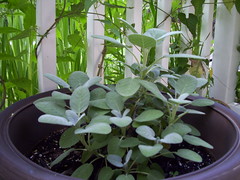| Sun-Mar Excel Self-Contained Composting Toilets (Photo credit: Wikipedia) |
A composting toilet essentially uses little to no water and utilizes the concept of aerobic decomposition to change the waste materials into compost, or a natural fertilizer. While there are a few types of composting toilet systems, they typically contain:
* A container where composting takes place
* Some type of exhaust system
* Oxygen supply to facilitate the decomposition
* A feature to allow any liquid to drain away
* An access door to empty the compost
Benefits of Composting Toilets
We’ve already discussed the benefits of decreased water usage. This not only helps the environment but it also helps your financial bottom line because you’re not using as much water and if you’re on a well/septic system then you don’t have to pay for regular septic system maintenance.
* Your composting toilet also makes it possible to easily compost other family and household waste including table scraps, yard waste and other compostable materials.
* You don’t contribute to sewage system runoff and water contamination.
* You don’t contribute to soil contamination.
* The end product, the compost, is a valuable fertilizer with high nutrient levels which are ideal for gardening, yard maintenance and household plants.
* Composting toilets are easy to install almost anywhere and they cost about half as much as a septic system installation. Also, the regular maintenance is much cheaper.
There are essentially two common types of composting toilets, the Self-Contained and the Centralized. In order to see which one is right for you, it’s important to understand how they work.
Self Contained versus Centralized Composting Systems
| A Sun-Mar remote (centralized) composting toilet system. (Photo credit: Wikipedia) |
Self-contained systems typically have an electrical fan, which means it has to be plugged in. This uses energy and is thus not 100% green. However, unlike central systems, they don’t need to use any water. A central composting system still needs a bit of water to flush the waste into the central composting unit.
There are pros and cons to both types of toilet composting systems. However, no matter which way you look at it, both options are more environmentally friendly and ultimately more sustainable than our standard water-wasting toilets.
More On Composting Toilets:


























